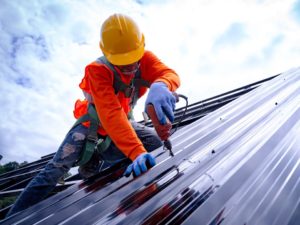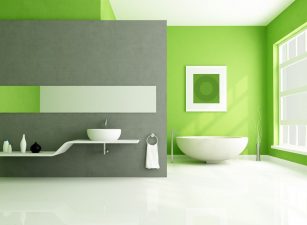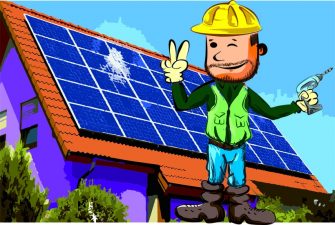Solar power as a sustainable source of energy is an easily available and frugal alternative to other energy sources. It has certainly become the latest trend in renewable energy. A clean, green source of energy, solar power is a great way to reduce your carbon footprint. It is a safe, environment-friendly, and free source of energy. Having a solar power system in your home gives you domestic freedom and financial help. Prolonged use of solar power can also reduce your electricity costs considerably. Some governments also provide a reduction in tax for solar power users! It is no wonder that more and more people are switching to this safe and reliable source of energy for their daily needs. And the feeling of doing something good for the environment is an added plus! Some governments also provide a reduction in tax for solar power users! It is no wonder that more and more people are switching to this safe and reliable source of energy for their daily needs. And the feeling of doing something good for the environment is an added plus!
Installing a solar system in your home is the first step to a cleaner and greener living. However, solar system installation is not as easy as it probably sounds! Firstly, you need to find out if your house is suitable for a solar panel. Before any real installation begins, you need to decide what type and where you want your solar panel installed. And even though it is possible to install a solar panel yourself, it is still better to contact an experienced and trustworthy solar system installer. Installing a solar panel is a big and expensive commitment. Do not take it lightly. Do your research before taking up a solar panel installation project by yourself or hiring a solar system contractor. The following steps can guide you through the process of solar panel installation on your roof.
Cost of Installing Solar Panel
Solar panel installation is neither easy nor inexpensive. In fact, it can be pretty costly. To calculate the installation cost, take the total cost of installation including the parts and labor, and divide it with the electrical power it produces. However, there are many factors that affect the cost of installation. The time, as well as the amount of sunlight that each location gets, varies considerably. This affects the number of solar modules you need and the type of system you can set up. Due to this, the average cost per watt of solar panel installation also varies from place to place. Other factors include the amount of electricity you use, the type of panels and inverter you install. However, once you have a running system, it does start paying for itself in some time. Once the cost of installation breaks even, you can save a lot of money too.
Ensure Your Roof is Suitable
We cannot overstate the importance of this! Before you go ahead and incur the vast expenses of a solar panel installation, do make sure that your roof is suitable for a solar panel system. If your roof is covered in shadows for most of the day, it won’t get enough sunlight to justify installing solar panels. On the other hand, the structural shape of your roof is also an equally important factor. Despite getting ample sunlight, if your roof structure is not good enough to hold a solar panel, then no use wasting money over it. Hence, it is very important to know it is suitably sunlit for most of the day and is also
Getting Permissions and Certifications
After the first inspection of your roof, the next step is getting the permissions and certifications for a solar system in your house. If you have an installation company working for you, they should handle getting you any permits or paperwork needed to install the system in your house. There are also certain certificates you need to get from the government for the same. Several governments also offer Feed-in Tariffs (FiT) or federal Investment Tax Credits (ITC) to anyone installing a solar system. If you’re not working with any solar contractor, this can be a little difficult for you. Make sure you register for any tax credit or similar certification as needed. Also, ensure you have all the necessary permissions and certificates before you start any installation process.
Measure Your Roof and Fix Panel Location
The next step is to inspect your roof or get it inspected with the installation company personnel. A thorough inspection of the roof and your electric panel will help determine if your roof is sound enough to hold the solar panel system. Once the inspection is done, you will need to find the ideal location on your roof that gets direct sunlight throughout the day.
Install the Mounts/Brackets
The next step is to install the brackets or mounts for the solar panels. The solar panel mounts or brackets are the frames of support on which the panels are fixed. These mounts effectively raise the panels from the roof surface. However, the type of mounts you install depends on the type of roof you have. Brackets are generally used on sloped roofs and provide a fixed positioning of the panels.
Attach the Panels to Mount Rails
Once your mount rails are installed, you need to attach the panels to them. This is a tricky process and you should do it with proper preparation and according to the instructions.
Connect the Panels to Each Other
When your panels are securely installed, connect them to each other based on how you want to produce power. It is advisable to connect a ground wire from all your hardware to the earth when installing solar panels. You should make sure that all the wiring is connected to a conduit or is shockproof. Also, check all the wires are insulated and wrapped in electrical tape to make it waterproof. If possible, install a conduit over all wires you use for paneling to protect them from rain and sunlight.
Connect the Panels to Batteries and Controllers
Next step is to connect the solar panels to the controller. The controller is in turn connected to the battery. A battery is a device that stores the energy generated by the solar panels. And the controller protects the battery by regulating the flow of electricity it receives from the solar panels. Hence, it is essential to install a controller for more effective and productive systems. It is better to let a certified solar installer or an electrician handle this step. An electrician can do all the wiring and connections necessary to get your system running.
Get the Inverter Installed
The next step is to install the inverter. Again, this is a very crucial step as inverters are essential to get usable energy. Your solar panels generate electrical energy in the form of direct current (DC) while all the major appliances in your house operate on electricity in the form of alternating current (AC). An inverter is a device that converts the generated direct current (DC) into usable alternative current (AC). Ideally, you should install the inverter in the loft, the garage or an outbuilding. The main criterion is to select a dry, clean and properly ventilated space. Solar systems generally come pre-wired from the manufacturer and only need to be connected to the inverter. But, it is advisable for you to let a professional electrician handle this step. Finally, get an electrician or your contractor to do a final check of your systems to make sure everything is in order.
Solar panel installations have become pretty easy over the years. And considering the current pace of technological advancements, this process is bound to become even simpler in the near future!
























